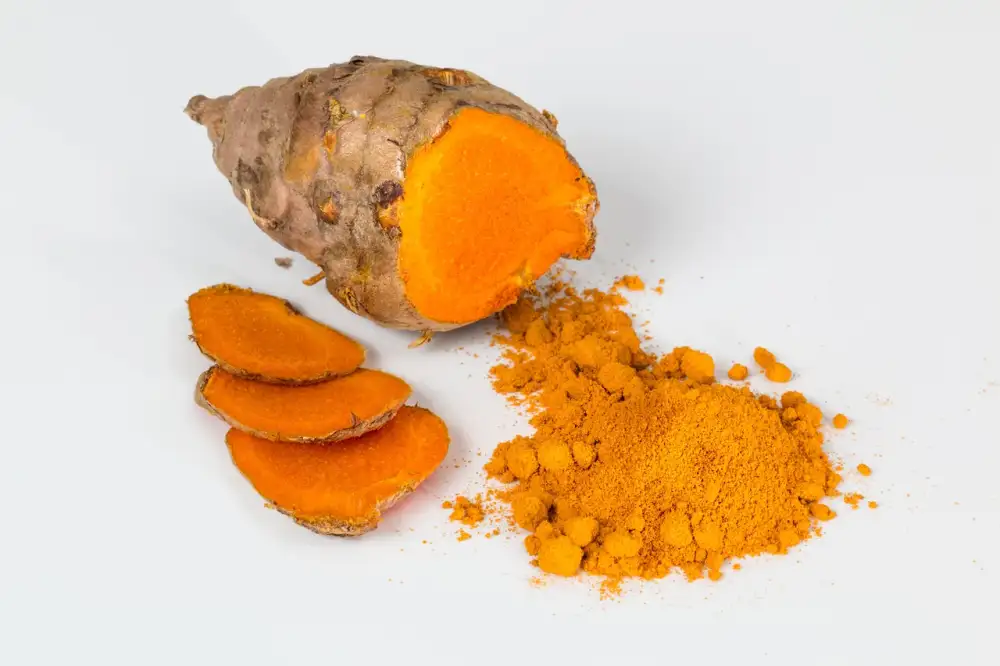Spice up Your Taste Buds with Authentic Indian Food Delights

- Rich and Diverse Flavors of Indian Cuisine
- Staple Ingredients in Indian Cooking
- Regional Varieties of Indian Food
- Popular Indian Dishes and Recipes
- Health Benefits of Indian Spices and Herbs
- Traditional Indian Cooking Techniques
- Indian Street Food: A Culinary Adventure
- Fusion Cuisine: Indian-Inspired Dishes from Around the World
- Exploring Indian Desserts and Sweets
- Tips for Cooking Authentic Indian Food at Home
Indian cuisine is a treasure trove of flavors, spices, and aromas that have captivated food lovers around the world. With its rich history and diverse regional influences, Indian food offers a culinary experience like no other. From fragrant curries to mouthwatering street food, every dish tells a story of tradition and passion. Whether you're a spice enthusiast or someone who appreciates bold flavors, Indian cuisine is sure to tantalize your taste buds and leave you craving for more. So let's embark on a gastronomic journey through the vibrant and flavorful world of Indian food.
Rich and Diverse Flavors of Indian Cuisine
Indian cuisine is renowned for its rich and diverse flavors that tantalize the taste buds. From spicy curries to aromatic biryanis, each dish is a burst of flavor that leaves a lasting impression. The secret behind these flavors lies in the skillful use of spices and herbs, which are carefully blended to create a harmonious balance of taste. Whether it's the fiery heat of chili peppers or the earthy aroma of cumin, every spice plays a crucial role in enhancing the overall flavor profile of Indian dishes. The combination of spices varies from region to region, resulting in a wide range of flavors that cater to different palates. Whether you prefer mild and creamy dishes or bold and spicy ones, Indian cuisine has something to offer for everyone. So prepare your taste buds for an unforgettable culinary journey through the vibrant and diverse flavors of Indian cuisine!
Staple Ingredients in Indian Cooking
Indian cuisine is known for its bold and vibrant flavors, which are achieved through the use of various spices and ingredients. Here are some staple ingredients that are commonly used in Indian cooking:
1. Spices: Spices play a crucial role in Indian cuisine, adding depth and complexity to dishes. Common spices include turmeric, cumin, coriander, cardamom, cinnamon, cloves, and fenugreek.
2. Lentils and Legumes: Lentils and legumes are an essential part of Indian cooking, providing a good source of protein and fiber. Popular varieties include red lentils (masoor dal), yellow lentils (moong dal), chickpeas (chana), and black-eyed peas (rajma).
3. Rice: Rice is a staple grain in India and is often served alongside curries or used to make biryanis. Basmati rice is highly prized for its fragrance and long grains.
4. Wheat: Wheat flour is used to make various breads like roti, chapati, naan, and paratha. It is also used to make snacks like samosas and pakoras.
5. Yogurt: Yogurt is commonly used in Indian cooking as a marinade for meats or as a base for creamy curries like butter chicken or chicken tikka masala.
6. Coconut: Coconut is widely used in southern Indian cuisine, lending a rich flavor to curries and chutneys.
7. Ghee: Ghee, or clarified butter, is commonly used in Indian cooking for its rich flavor and high smoke point. It adds richness to dishes like biryanis and lentil soups.
By incorporating these staple ingredients into your pantry, you can begin to explore the wonderful world of Indian cuisine right in your own kitchen!
Regional Varieties of Indian Food
India is a land of diverse cultures and traditions, and this diversity is beautifully reflected in its regional cuisines. Each region in India has its own unique style of cooking and distinct flavors that make it stand out. From the fiery dishes of the North to the coconut-infused curries of the South, Indian cuisine offers a wide range of regional specialties that are sure to tantalize your taste buds. Whether you're craving for the rich and creamy gravies of Punjab or the aromatic spices of Rajasthan, there's something for everyone in the vast culinary landscape of India. So, get ready to embark on a gastronomic journey as we explore the regional varieties of Indian food.
Popular Indian Dishes and Recipes
Indian cuisine is known for its wide array of delicious dishes that are loved by people all over the world. Here are some popular Indian dishes that you must try:
1. Butter Chicken: This creamy and flavorful dish consists of tender chicken cooked in a rich tomato-based gravy, with a hint of butter and spices.
2. Biryani: A fragrant rice dish cooked with meat, vegetables, and aromatic spices. Each region in India has its own version of biryani, making it a versatile and beloved dish.
3. Masala Dosa: A crispy rice and lentil crepe filled with a spicy potato filling. It is typically served with coconut chutney and sambar.
4. Palak Paneer: A vegetarian delight made with fresh spinach leaves and cottage cheese cubes simmered in a spiced tomato gravy.
5. Chole Bhature: A popular North Indian dish consisting of spicy chickpea curry served with deep-fried bread called bhature.
6. Tandoori Chicken: Marinated chicken cooked in a clay oven (tandoor) to perfection, resulting in smoky flavors and juicy meat.
7. Rogan Josh: A Kashmiri specialty, this aromatic lamb curry is cooked slowly with yogurt, onions, and a blend of spices.
8. Pani Puri: Also known as golgappa or puchka, this street food favorite consists of hollow puris filled with spicy water, tamarind chutney, and various fillings like potatoes or chickpeas.
These are just a few examples of the countless mouthwatering dishes that Indian cuisine has to offer. With their unique flavors and spices, these dishes will surely leave you craving for more!
Health Benefits of Indian Spices and Herbs
Indian cuisine is not only known for its rich and diverse flavors but also for its numerous health benefits. The secret lies in the spices and herbs used in Indian cooking. These ingredients not only add depth and complexity to the dishes but also offer a wide range of medicinal properties.
Turmeric, for example, is a staple in Indian cooking and contains curcumin, a powerful antioxidant with anti-inflammatory properties. It has been used for centuries in traditional Ayurvedic medicine to treat various ailments such as arthritis, digestive disorders, and even cancer.
Another commonly used spice is cumin, which aids digestion and helps improve immunity. It is packed with iron and can help prevent anemia. Cinnamon, on the other hand, helps regulate blood sugar levels and has been shown to lower cholesterol.
Ginger is widely used in Indian cuisine for its digestive properties. It can relieve nausea, reduce inflammation, and even alleviate menstrual pain. Coriander seeds are known to aid digestion and have antimicrobial properties.
Fenugreek seeds are often used in Indian cooking for their ability to control blood sugar levels and reduce cholesterol. They are also believed to increase milk production in breastfeeding mothers.
Indian cuisine also incorporates a variety of herbs like curry leaves, mint, and cilantro, which not only enhance the flavor of the dishes but also provide numerous health benefits. Curry leaves are rich in antioxidants and can help lower cholesterol levels. Mint has soothing properties that aid digestion and cilantro is known for its detoxifying effects.
By incorporating these spices and herbs into your diet, you can not only enjoy delicious meals but also reap the health benefits they offer. So why not spice up your taste buds while nourishing your body at the same time?
Traditional Indian Cooking Techniques
Indian cuisine is known for its unique and traditional cooking techniques that have been passed down through generations. These techniques not only enhance the flavors of the dishes but also contribute to their authenticity. Here are some of the traditional cooking techniques used in Indian cuisine:
1. Tadka (Tempering): Tadka involves heating oil or ghee and adding spices like cumin seeds, mustard seeds, and curry leaves to release their flavors. This technique is commonly used at the beginning or end of cooking to infuse dishes with aromatic flavors.
2. Dum Pukht: Dum Pukht is a slow-cooking method where food is cooked in a sealed pot over low heat. This technique allows the ingredients to cook slowly, resulting in tender and flavorful dishes.
3. Bhuna: Bhuna refers to frying spices, onions, and tomatoes until they are well-cooked and caramelized. This technique brings out the rich flavors and deepens the color of the dish.
4. Tandoor: The tandoor is a traditional clay oven used to cook various dishes such as naan bread, kebabs, and tandoori chicken. The intense heat of the tandoor gives these dishes a smoky flavor and a unique charred texture.
5. Dum: Dum cooking involves sealing a pot with dough or foil to trap steam during slow-cooking. This technique helps retain moisture and intensifies the flavors of the dish.
6. Charring: Charring vegetables like eggplant or bell peppers directly over an open flame adds a smoky flavor to dishes like baingan bharta or roasted pepper chutney.
By using these traditional cooking techniques, Indian cuisine creates complex layers of flavors that are both comforting and enticing. So next time you try your hand at cooking Indian food, don't forget to incorporate these techniques for an authentic experience!
Indian Street Food: A Culinary Adventure
One of the most exciting aspects of Indian cuisine is its vibrant street food culture. The streets of India are filled with an array of mouthwatering snacks and delicacies that will take your taste buds on a thrilling journey.
From the famous samosas to the spicy pani puri, Indian street food offers a wide range of flavors and textures. Each region has its own specialties, making it a truly diverse culinary experience. Whether you're in Mumbai, Delhi, or Kolkata, you'll find unique street food dishes that are sure to leave you craving for more.
One popular street food item is the vada pav, a delicious potato fritter sandwiched between soft buns. It's often served with chutneys and spicy sauces, adding an extra kick to every bite. Another must-try is the pav bhaji, a buttery vegetable curry served with toasted buns. The combination of flavors and textures in these dishes is simply irresistible.
For those who enjoy spicy food, the fiery bhel puri is a must-try. Made with puffed rice, chopped vegetables, tangy tamarind chutney, and spicy green chutney, this snack packs a punch in every mouthful. And if you have a sweet tooth, don't miss out on the jalebi - deep-fried swirls of batter soaked in sugar syrup.
Exploring Indian street food is not just about satisfying your taste buds; it's also about immersing yourself in the vibrant atmosphere and rich cultural heritage of India. Street vendors prepare these delicacies right before your eyes, using traditional cooking techniques passed down through generations.
While indulging in street food can be an adventure in itself, it's important to choose clean and hygienic stalls to ensure your safety. Look for crowded stalls where locals gather as they usually indicate good quality and freshness.
So next time you visit India, make sure to embark on a culinary adventure through the bustling streets and savor the flavors of Indian street food. It's an experience that will leave you with lasting memories and a newfound appreciation for the diverse and delicious cuisine of India.
Fusion Cuisine: Indian-Inspired Dishes from Around the World
Fusion cuisine has become increasingly popular in recent years, and Indian-inspired dishes have made their mark on menus around the world. Chefs are incorporating Indian flavors and techniques into their own culinary creations, resulting in unique and exciting dishes that blend traditional Indian ingredients with international influences. From Indian-inspired pizzas topped with tandoori chicken and paneer to spicy curries infused with Mexican chilies, the possibilities are endless. These fusion dishes offer a delightful combination of familiar flavors with a touch of exotic Indian spices, creating a truly memorable dining experience.
Exploring Indian Desserts and Sweets
No Indian meal is complete without indulging in the delightful array of desserts and sweets that the country has to offer. Indian desserts are known for their rich flavors, aromatic spices, and mouthwatering textures. From creamy rice puddings to syrup-soaked pastries, there is something to satisfy every sweet tooth.
One popular dessert is Gulab Jamun, deep-fried milk dumplings soaked in a fragrant rose-flavored sugar syrup. Another favorite is Jalebi, crispy spirals of batter soaked in saffron-infused syrup. These desserts are often enjoyed during festivals and celebrations.
Indian sweets also include a variety of milk-based treats like Rasgulla, soft cheese balls soaked in cardamom-infused sugar syrup, and Kheer, a creamy rice pudding flavored with nuts and saffron. These desserts are not only delicious but also represent the richness of Indian culinary traditions.
For those who prefer something lighter, there are fruit-based desserts like Mango Kulfi, a refreshing frozen treat made with ripe mangoes and condensed milk. And let's not forget about the iconic Indian dessert - the traditional Indian ice cream called Kulfi. It comes in various flavors such as pistachio, rose, and saffron.
Exploring Indian desserts is like embarking on a sweet adventure that will tantalize your taste buds and leave you craving for more. So next time you indulge your sweet tooth, don't miss out on experiencing the vibrant world of Indian sweets and desserts.
Tips for Cooking Authentic Indian Food at Home
1. Start with the right spices: Invest in a variety of authentic Indian spices like cumin, coriander, turmeric, and garam masala. These spices are the foundation of Indian cooking and will add depth and flavor to your dishes.
2. Understand the balance of flavors: Indian cuisine is known for its perfect balance of sweet, sour, spicy, and savory flavors. Experiment with different combinations to achieve the desired taste in your dishes.
3. Use fresh ingredients: Fresh vegetables, herbs, and meats are key to creating authentic Indian flavors. Avoid using canned or frozen ingredients whenever possible.
4. Master the art of tempering: Tempering is a technique where whole spices are heated in oil or ghee to release their flavors before adding them to a dish. This step adds an aromatic touch to your curries and lentils.
5. Don't be afraid of heat: Indian food is often associated with spiciness, but you can adjust the level of heat according to your preference. Start with small amounts of chili powder or fresh chilies and gradually increase if desired.
6. Slow cooking is key: Many Indian dishes require slow cooking to allow the flavors to develop fully. Patience is essential when preparing curries, biryanis, or stews.
7. Pay attention to presentation: Indian cuisine is not only about taste but also about visual appeal. Garnish your dishes with fresh herbs, colorful spices, or a drizzle of yogurt for an enticing presentation.
8. Experiment with regional recipes: India has diverse regional cuisines that vary in flavors and techniques. Explore recipes from different regions like Punjab, Kerala, or Bengal to experience the true diversity of Indian food.
9. Embrace traditional cooking utensils: Traditional utensils like clay pots (handi), tandoor ovens, or cast-iron skillets can enhance the authenticity of your Indian cooking. They add a unique flavor and texture to your dishes.
10. Seek inspiration from Indian chefs: Follow renowned Indian chefs or watch cooking shows to learn new techniques and get inspired by their creativity in the kitchen.
By following these tips, you can recreate the authentic flavors of India in your own kitchen and impress your family and friends with delicious homemade Indian dishes.
In conclusion, Indian cuisine is a vibrant and flavorful world waiting to be explored. From the rich and diverse flavors to the health benefits of spices and herbs, there is something for everyone to enjoy. Whether you're a fan of traditional dishes or prefer fusion cuisine, Indian food offers endless possibilities. So why not spice up your taste buds and embrace the deliciousness of authentic Indian cooking? Get ready to embark on a culinary adventure like no other!
Published: 30. 11. 2023
Category: Food



